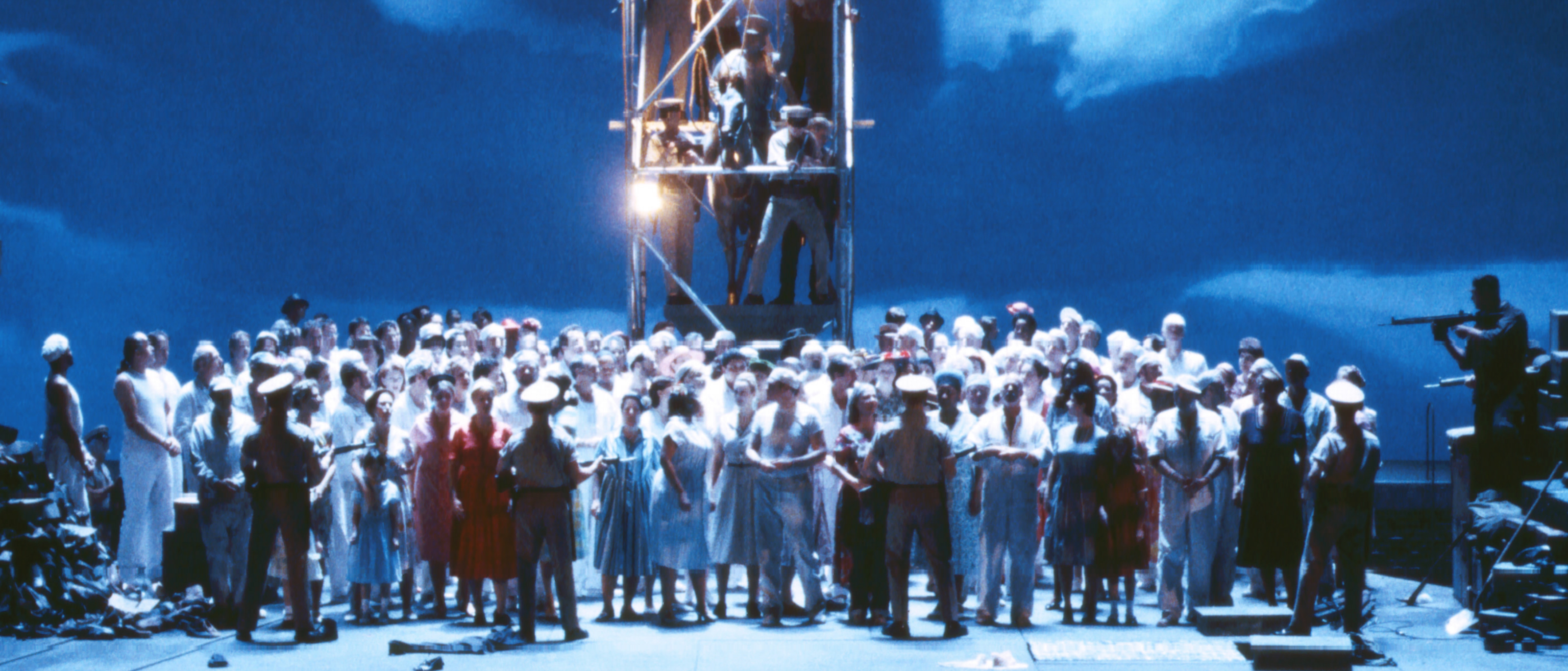
Beethoven and Musical Aesthetics
Today, Beethoven is generally remembered as a composer of instrumental works: His symphonies and sonatas are among the most highly respected in the Classical repertoire, while Fidelio, the composer’s only completed opera, is often viewed as a fluke in a grand instrumental oeuvre. Yet the very concept of Beethoven as an “instrumental” composer is worth delving into, because it reflects specific aesthetic notions—and conscious historiographic decisions—made in the years after Beethoven’s death.
Around the turn of the 19th century, new ideas about music and the arts began to shake German-speaking lands. For centuries, art had been judged by how well it could depict or represent real-life objects and ideas. Consider the example of a tree: Visual arts (such as painting and drawing) could depict a tree in a recognizable way. Poetry could describe the tree. Yet music could do neither; although music could evoke ideas, it had no inherent ability to depict or describe real-world objects. Thus, well into the 18th century, visual arts and poetry were viewed as foremost among the arts, while music was considered a lesser art form.
Then, around the turn of the 19th century, a profound about-face took place. Philosophers—especially Germans inspired by the work of Immanuel Kant—began to claim that it was music’s very inability to depict the real world that made it the greatest of art forms. No longer was it the purview of art to describe our surroundings, they declared; rather, the purpose of art was to help us experience the indescribable: the realm of feelings and emotions and ideas that could never truly be put into words. And which art form was best suited to this indescribable realm? Music. Almost overnight, music’s inability to describe or depict the world went from being a perceived defect to a perceived artistic advantage.
One of the best expressions of these new aesthetic criteria occurred in 1805 (the very year of Fidelio’s premiere) in a review of Beethoven’s Fifth Symphony by the novelist, composer, and lawyer E.T.A. Hoffmann. In this review, Hoffmann clearly laid out his perspective on the aesthetic purpose of music. “Music,” he wrote, “opens up to humanity an unknown realm; a world that has nothing in common with the external world of the senses, but in which a person leaves behind all reason and intellectual explanations to give themselves over to the inexpressible.” Not all music was created equal, however. Hoffmann wasted no time in explaining that these criteria applied only to instrumental music alone. “If we are to describe music as an individual art form, we can only mean instrumental music,” he declared, “since it scorns … the addition or help of every other kind of art.” (In other words, instrumental music makes no recourse to words or images to convey its meaning.) By contrast, vocal music “allows no space for undefined yearning but [instead presents] only those feelings that can be expressed in words.”
In the broadest terms, then, the 19th-century German musical aesthetics advocated by thinkers like Hoffmann prized abstract instrumental music while treating music with words as aesthetically inferior. And this perception would have a profound impact on early biographies and musical studies of Beethoven. Within a few years of his death, Beethoven was being held up as the greatest of German composers, the musician whom all subsequent German composers should strive to emulate. Yet in light of the aesthetic priorities described above, “emulating” Beethoven meant forging bold new paths for instrumental music. Debates would rage over how best to carry on the symphonic tradition exemplified by Beethoven (most notably in the “absolute” versus” program music” schism of the latter half of the century), but the image of Beethoven as a symphonic composer first and foremost went essentially without saying.
As we study music history today, however, it is crucial to recognize that this aesthetic decision to prioritize Beethoven’s instrumental music over his operatic and choral compositions was just that: a decision. Aesthetic hierarchies are always culturally defined, and a careful study of “historiography” (the way a history has been told) will help us understand how the ideas and agendas of previous generations may affect our own musical perceptions and tastes. Happily, Fidelio is now embraced as an element of Beethoven’s oeuvre worthy of performance and study. What might be the next musical work or genre to be granted the same level of respect?
Critical Inquiry
Can you think of any kinds of music or art that are considered “good” or “bad”? Serious or silly? High-brow or low-brow? Why do you think these genres might be designated this way? Do you agree with these designations? Why might designations like these be problematic or unfair?